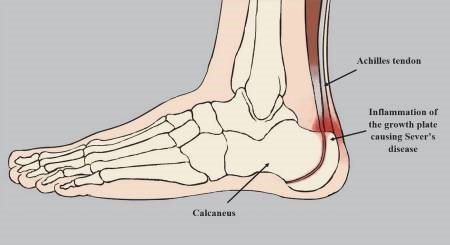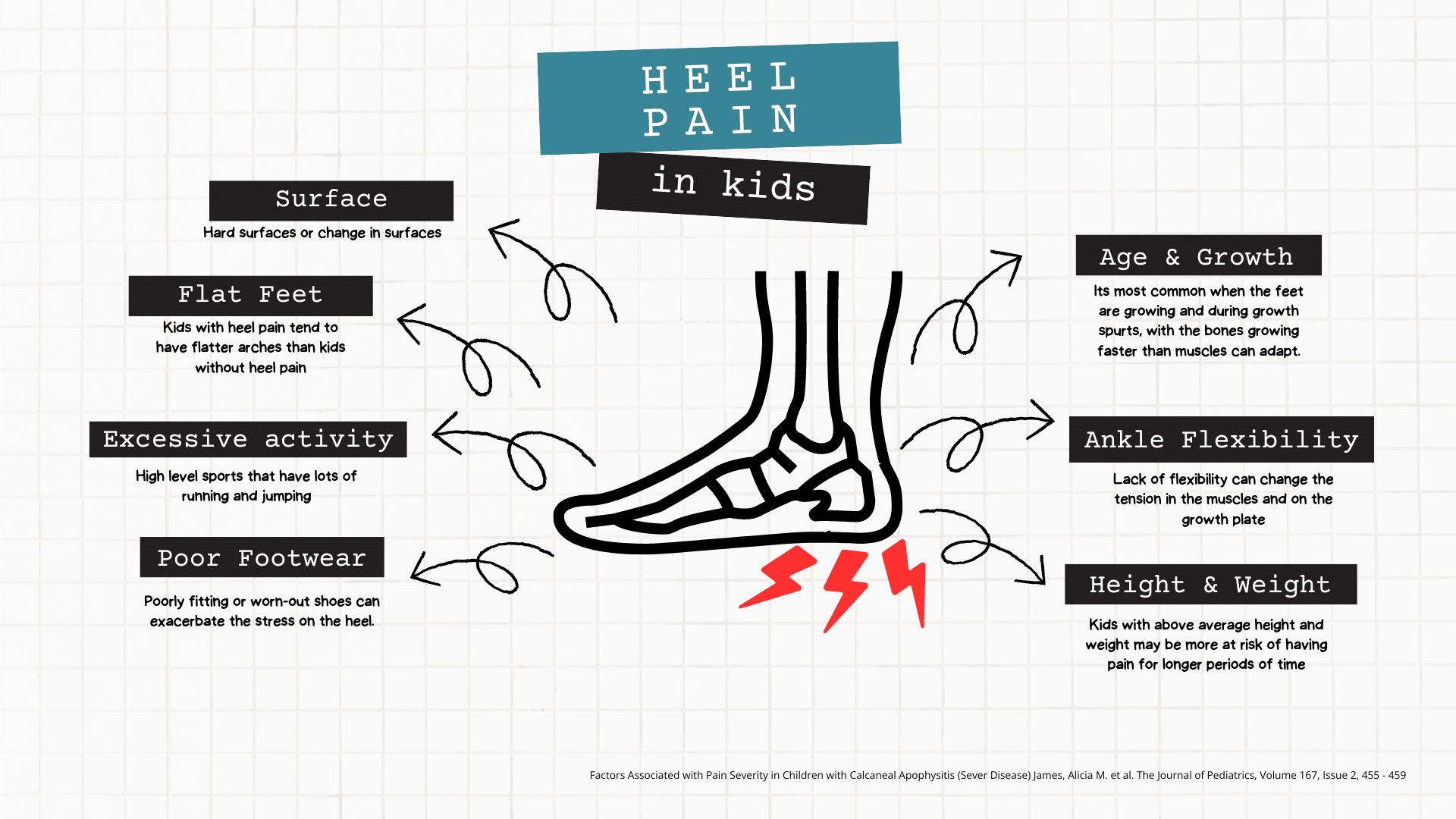
Understanding Calcaneal Apophysitis (Sever’s Disease)

Meet Jimmy, a 10-year-old soccer enthusiast who plays not just for his local team but has also made it to the development squad. With school athletics around the corner, Jimmy’s excitement is through the roof. However, there’s a growing concern—he’s noticed a nagging pain in his heel, especially when running and jumping. Initially, the pain only appeared while he was playing sports, but now it lingers long after the game is over.
What’s Going On?
Jimmy’s situation is a classic case of calcaneal apophysitis, commonly known as Sever’s disease. This condition is the most frequent cause of heel pain in growing children, particularly those who are active in sports. It typically affects boys between the ages of 8 and 15 and girls between 7 and 13, with a peak around 10 to 12 years of age. Unlike adult heel pain, which often stems from issues like Achilles tendinopathy, Calcaneal Apophysitis is an overuse injury that occurs in the growth plate at the back of the heel.

Fares et al (2021)
Why Does It Happen??
During periods of rapid growth, like the one Jimmy is experiencing, the bones in a child’s body can grow faster than the muscles and tendons can stretch. This imbalance creates tension where the Achilles tendon attaches to the heel bone (calcaneus), leading to inflammation and pain. The growth plate in the heel is the weakest part of the bone structure, making it particularly vulnerable to stress during these times.
Several factors contribute to the development of or ongoing pain in Calcaneal Apophysitis:

Why See a Physio?
Diagnosing calcaneal apophysitis typically involves a physical exam and a detailed discussion about the symptoms and history. Imaging, like X-rays, are rarely needed since the appearance of a growth plate is normal in children of Jimmy’s age. However, a physiotherapist plays a crucial role in differentiating Calcaneal Apophysitis from other potential causes of heel pain, there are quite a few, and in developing a personalized treatment plan.
Treatment usually involves modifying activity levels, which is hard in kids, improving flexibility, and addressing any underlying strength deficits. Your physio will check the way your child runs and moves (biomechanics) and review their footwear, considering if anything needs to be added to your shoes (like heel lifts or cushioning). They might work with your podiatrist on this. Your physio will also help keep you active & playing, because that is the most important thing!
What’s Next for Jimmy?
With the right support and guidance, Jimmy can get back to doing what he loves without the lingering pain. The good news is that most kids fully recover from calcaneal apophysitis once their growth plates close, typically around 15 to 16 years of age, but often with the right help well before this. It’s all about keeping Jimmy’s feet & body healthy and strong.
What can I do while I am waiting to see a physio?
What a great question!
Here are some of our favourite strength exercises to get your child started. These are general exercises/advice and do not replace a health professional assessment. If your child finds these too difficult or painful, stop and check in with your paeds physio.
References
- Fares MY, Salhab HA, Khachfe HH, Fares J, Haidar R, Musharrafieh U. Sever’s Disease of the Pediatric Population: Clinical, Pathologic, and Therapeutic Considerations. Clin Med Res. 2021 Sep;19(3):132-137. doi: 10.3121/cmr.2021.1639. PMID: 34531270; PMCID: PMC8445662.
- Hanlon SL, Bley BC, Silbernagel KG. Determining the feasibility of exercise therapy and activity modification for treating adolescents with heel pain: a study protocol. BMJ Open Sport Exerc Med. 2022 Sep 7;8(3):e001301. doi: 10.1136/bmjsem-2021-001301. PMID: 36111126; PMCID: PMC9454050.
- Hernandez-Lucas P, Leirós-Rodríguez R, García-Liñeira J, Diez-Buil H. Conservative Treatment of Sever’s Disease: A Systematic Review. J Clin Med. 2024 Feb 28;13(5):1391. doi: 10.3390/jcm13051391. PMID: 38592198; PMCID: PMC10932217.
- James AM, Williams CM, Haines TP. Effectiveness of footwear and foot orthoses for calcaneal apophysitis: a 12-month factorial randomised trial. Br J Sports Med. 2016 Oct;50(20):1268-1275. doi: 10.1136/bjsports-2015-094986. Epub 2016 Feb 25. PMID: 26917682.
- James AM, Williams CM, Luscombe M, Hunter R, Haines TP. Factors Associated with Pain Severity in Children with Calcaneal Apophysitis (Sever Disease). J Pediatr. 2015 Aug;167(2):455-9. doi: 10.1016/j.jpeds.2015.04.053. Epub 2015 May 19. PMID: 26001316.
- Naaktgeboren K, Dorgo S and Boyle JB. Growth plate injuries in children in sports: A review of sever’s disease.Strength and Conditioning Journal (2017) 39:2(59-68)
- Midtiby SL, Wedderkopp N, Larsen RT, Carlsen AF, Mavridis D, Shrier I. Effectiveness of interventions for treating apophysitis in children and adolescents: protocol for a systematic review and network meta-analysis. Chiropr Man Therap. 2018 Oct 23;26:41. doi: 10.1186/s12998-018-0209-8. PMID: 30386556; PMCID: PMC6198434.






